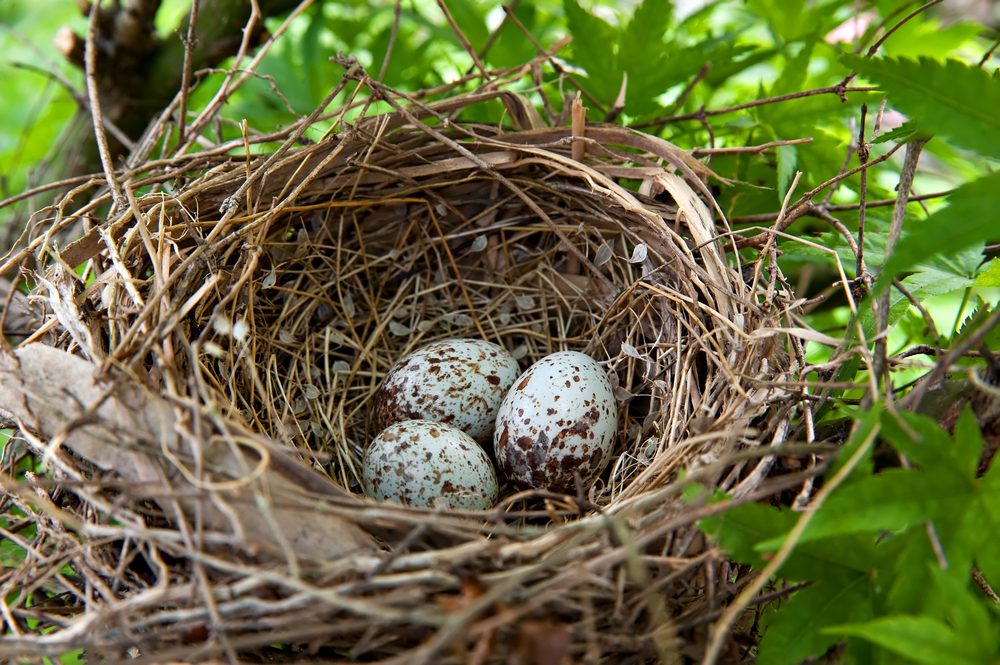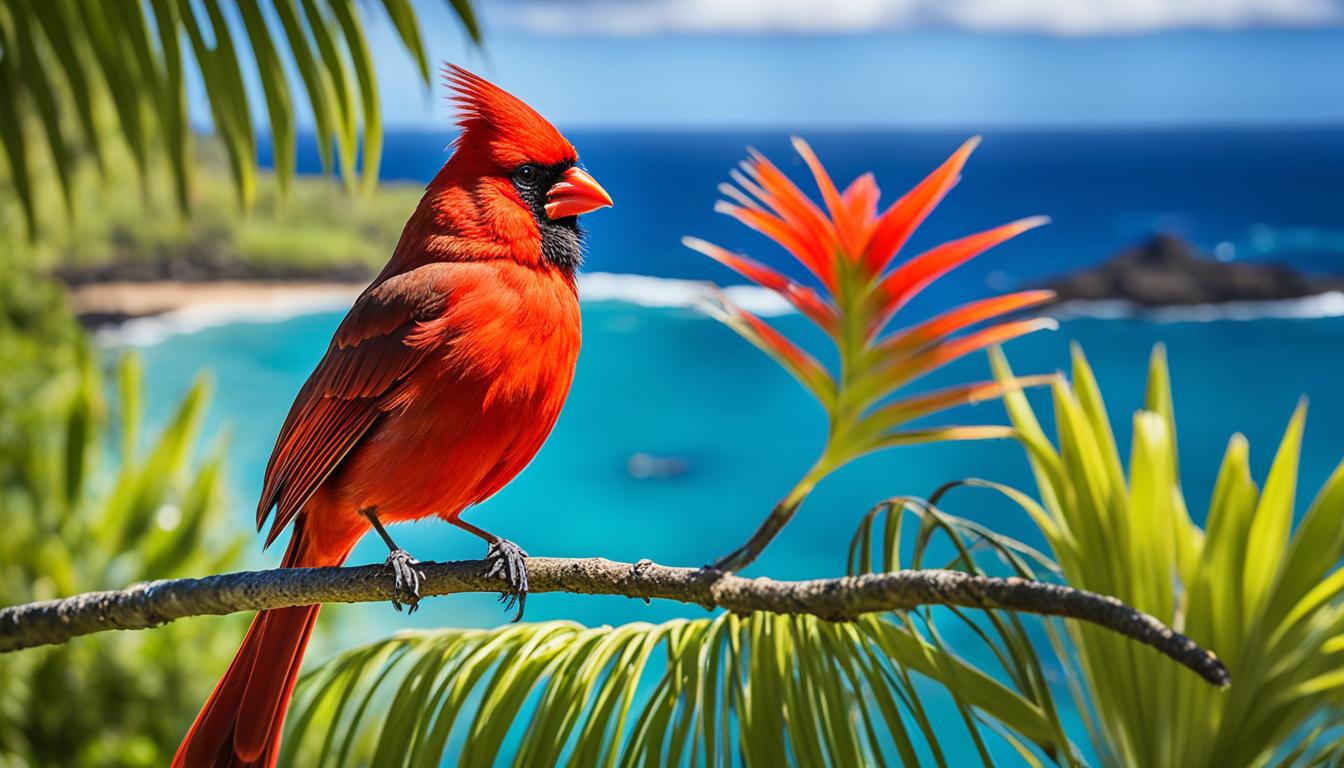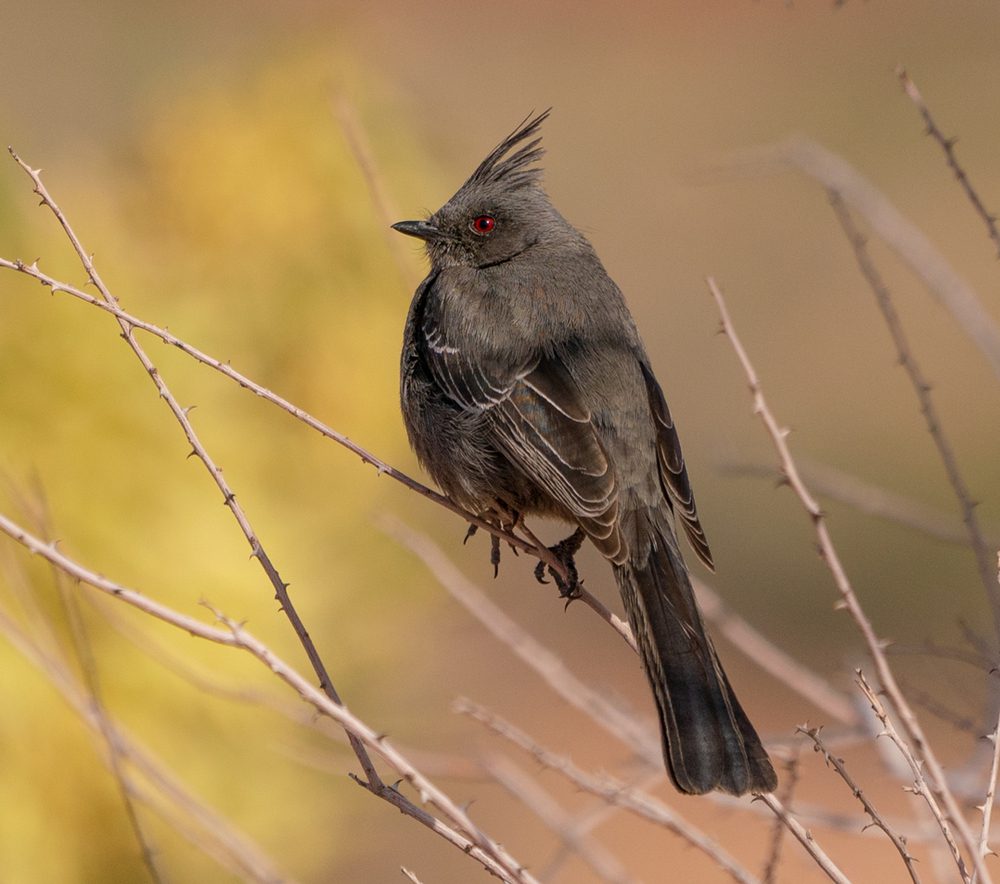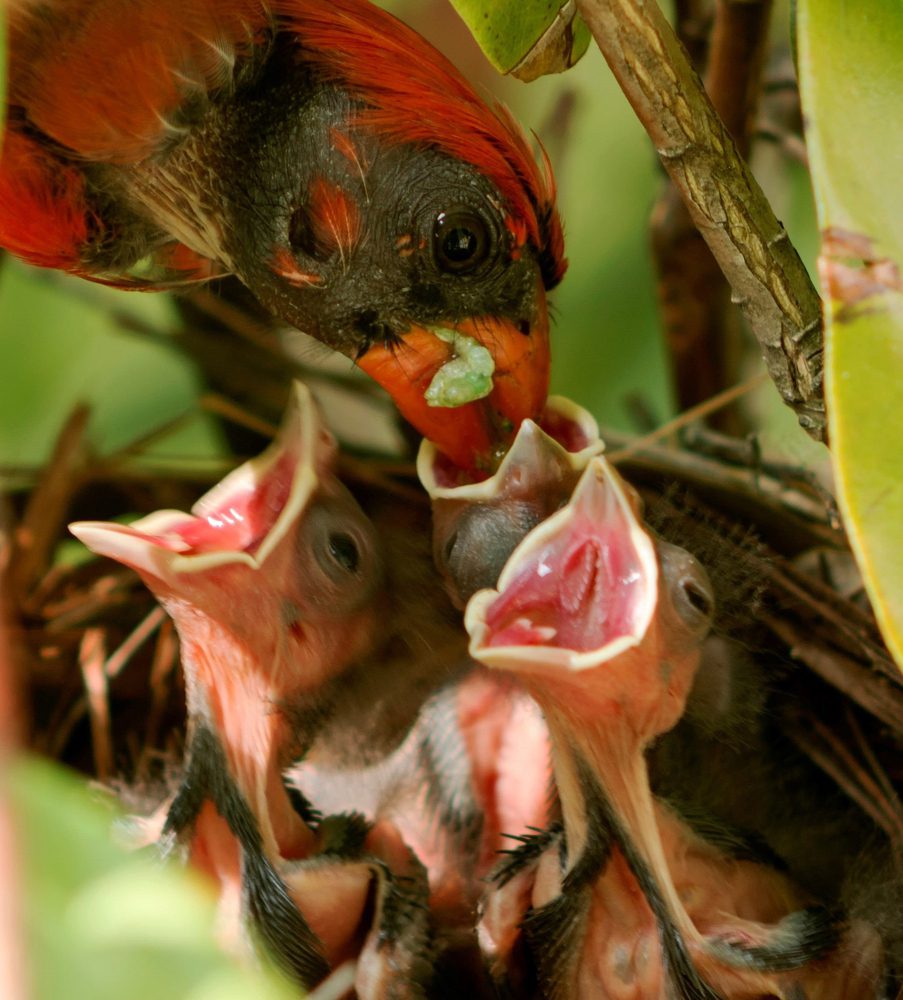Have you ever spotted a cardinal with black head that looks…well, not quite like the cardinals you’re used to? Maybe its head appeared unusually dark or even black? You’re not alone in your observations, and there’s a fascinating reason behind this phenomenon.
Table of Contents
Why Do Cardinals Have Black Heads During Molting?

For starters, what we’re seeing is a part of the molting process. Northern cardinals, particularly juveniles, undergo what’s called their first pre-basic molt. This critical phase transitions them into their adult plumage.
But sometimes, they shed all their head feathers at once, leaving their heads looking dark or bald before new feathers grow in. This might seem alarming, but it’s perfectly normal.
Cardinals can appear shabby during this time, opting to molt in August rather than April when they need to look their best for courtship. Cornell Lab of Ornithology notes this as a common occurrence among these young birds.
Theories Behind Cardinal With Black Head: Feather Mites and Molting Patterns
So why the sudden ‘black hat’ look? One theory involves feather mites. While feather mites typically don’t cause such dramatic feather loss, they could potentially contribute to the condition if there’s an infestation. However, the more likely explanation lies in the bird’s natural molting pattern. It’s a strategy that ensures they aren’t left vulnerable during colder months or mating season. By shedding their head feathers all at once, they can regrow them quickly without much interruption to their daily life.
Unique Characteristics of Juvenile Cardinals During Molting
The juvenile cardinals certainly grab our attention with their unconventional appearance. But this molting isn’t just about aesthetics, it’s a critical period for their development. As they lose their juvenile feathers, including those on their heads, they’re making room for their vibrant adult feathers.
The City of Cincinnati official website points out that it’s better for cardinals to look a bit odd during their molting period than during the spring when they need to charm a mate. Moreover, during this time, the beaks of young cardinals also differ from the adults’. They sport a blackish-gray hue instead of the bright coral color seen in older cardinals, as noted by animals.mom.com.
Understanding these peculiarities not only quenches our curiosity but also gives us insight into the resilience and adaptability of these creatures. Molting, with all its oddities, is a testament to the cardinals’ ability to thrive and transform.
Similar Birds and Visual Identification
Birds That Resemble the Cardinal
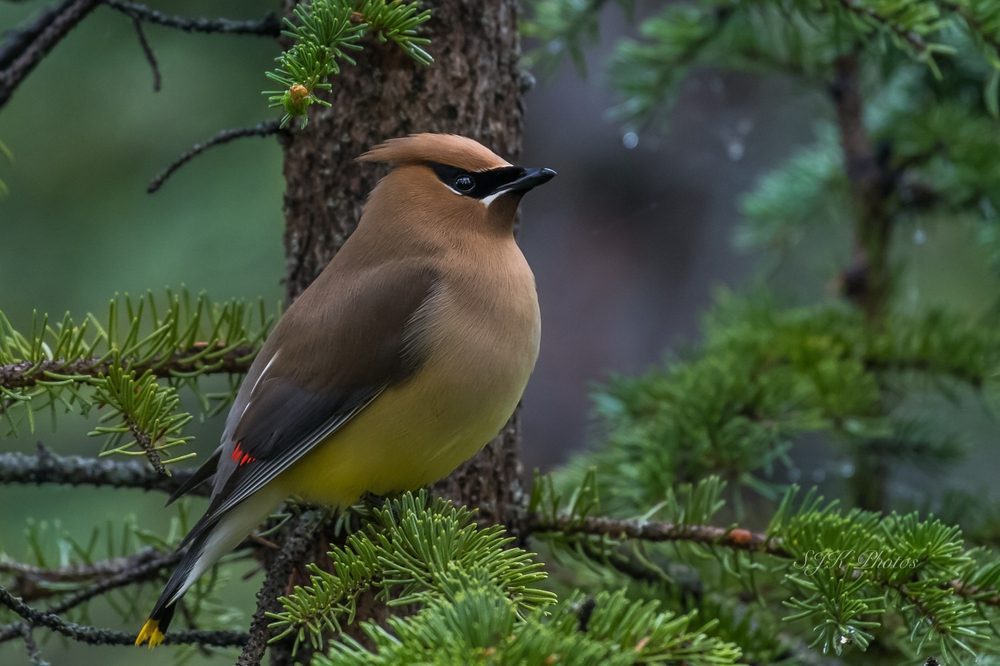
Ever noticed a bird perched in your backyard and thought, “Is that a cardinal?” only to realize it’s not? You’re not alone! The cedar waxwing, with its sleek crest and black mask, often gets mistaken for our beloved cardinal from a distance. These dapper birds are quite the sight with their palette of colors, including vivid touches on their wings and tails. But they’re just one of several species that can cause a double-take.

The Pyrrhuloxia, for example, is another look-alike you might encounter, especially if you’re in the American Southwest or northern Mexico. They share the cardinal’s robust body and crest but wear a more subdued gray and red ensemble. Their yellow, parrot-like beak is a dead giveaway that you’re not looking at a cardinal. These are just a couple of examples of avian doppelgangers that belong to the Cardinalidae family, which includes tanagers, grosbeaks, and buntings, all with their unique twists on the cardinal’s classic look.
Distinguishing Features of Cardinal Look-Alikes
So, how do we tell these birds apart? Cedar waxwings sport a distinctive yellow band on their tail feathers, and their sleek body is more brownish than the cardinal’s vibrant red. Meanwhile, the Pyrrhuloxia’s softer red hues and cool gray colors contrast starkly with the cardinal’s brilliant scarlet. Each species has its own set of characteristics, like the heftier bill of the grosbeak or the electric blue of the indigo bunting. Observing these little quirks helps us appreciate the diversity among these feathered friends and makes birdwatching all the more exciting.
Behavior-wise, there’s variety too. Cardinals are known for their clear, whistled songs and their tendency to frequent feeders and shrubs. Waxwings, on the other hand, are more likely to be seen in flocks, feasting on fruit or flying in tight formations. Getting to know these habits can be as helpful as noting physical features when identifying birds.
Tips for Identifying Red Birds with Black Heads

Here’s where it gets practical. Spotting a red bird with a black head might immediately bring cardinals to mind, but let’s refine that image. First, consider the body shape and size — is it plump like a cardinal or slimmer like a waxwing? Next, take a look at the beak: a cardinal’s is stout and cone-shaped, perfect for cracking seeds, while others may have thinner or more curved beaks.
Then, there’s the behavior. Cardinals love to sing from exposed perches and often visit feeders, whereas other species might be more reclusive or have different dining preferences. Lastly, location matters. Your geographical area could narrow down the possibilities significantly; some of these birds have very particular ranges.
With a keen eye and a bit of patience, distinguishing between these beautiful birds becomes second nature. And remember, there’s no harm in reaching out to local birdwatching groups or using online resources like the Cornell Lab of Ornithology’s Merlin Bird ID tool for a helping hand.
Appreciating the Beauty of Cardinals
As our exploration into the enchanting world of northern cardinals comes to a close, let’s take a moment to reflect on what makes these birds truly special. Cardinals aren’t just another feathered friend in our backyard; they are a symbol of vibrancy and resilience. With their striking red plumage, which males proudly display, and the delightful songs that grace the air, cardinals have a way of capturing our hearts and attention.
But it’s not just about aesthetics. The significance of cardinals extends beyond their visual appeal. These birds, with their nonmigratory habits, form an integral part of the local ecosystem. They are year-round residents in their habitats, adding continuity and life to our surroundings even in the winter months when other birds have flown south. Encouraging readers to step outside, or simply look out the window, to observe these birds is more than a pastime it’s an invitation to connect with nature and its cycles.
Observe and Appreciate
The act of birdwatching can be meditative and educational. Taking the time to watch cardinals go about their day can offer a peaceful respite from our busy lives. It’s also an opportunity to learn about their behaviors and appreciate the complexity of avian life. Observing how cardinals interact with their environment, and each other, during different seasons brings a deeper understanding and appreciation for these feathered creatures.
Contribute to Conservation
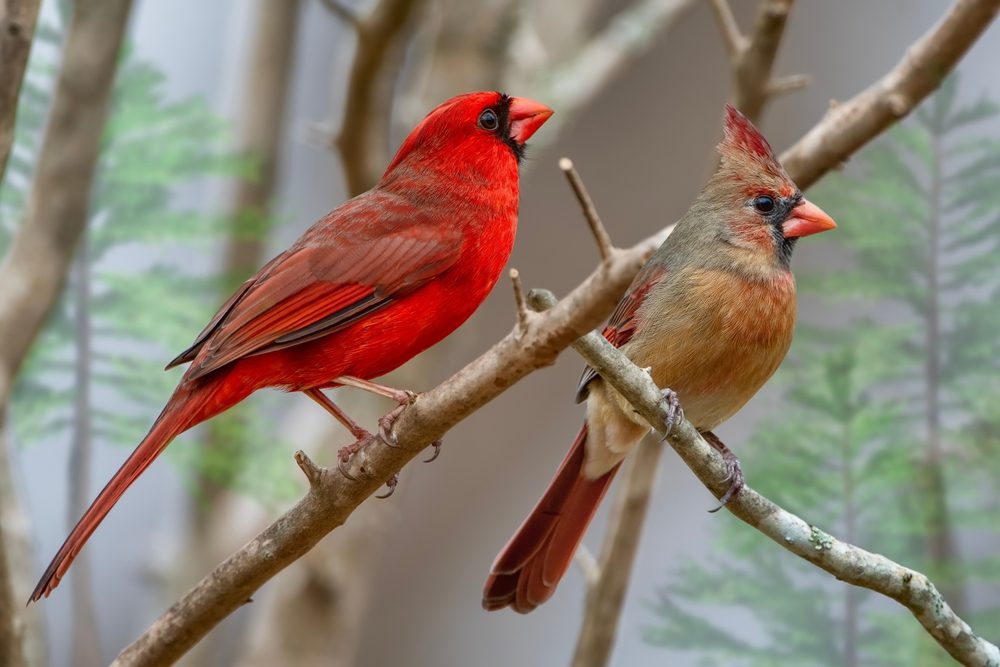
Our admiration for cardinals should go hand in hand with efforts to protect them. As we’ve seen, human activity can both positively and negatively impact cardinal populations. It’s crucial that we strike a balance that allows us to coexist sustainably with our cardinal friends. This can be as simple as planting native shrubs and trees that provide natural food sources, or participating in local conservation programs aimed at preserving bird habitats.


